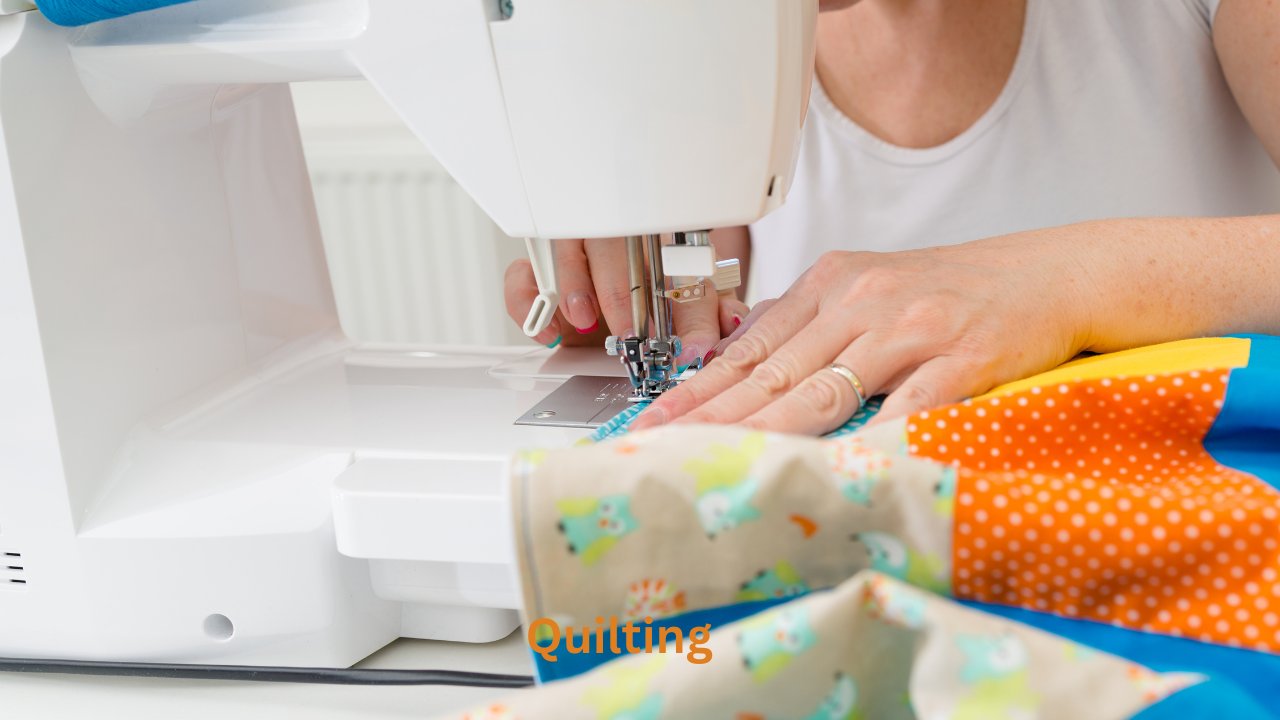Key Takeaways:
- Understanding the basics of quilting and its historical significance.
- Overview of essential features to look for in a sewing machine for quilting.
- Tips for setting up your quilting workspace.
- Practical advice for starting your first quilting project.
The Art of Quilting
It is an ancient craft whose roots stretch back thousands of years, transforming from a practical necessity into a beloved art form. This tactile creation process allows for endless creativity, from intricate designs to simple, cozy blankets that provide warmth and a piece of heritage. Quilting has various techniques and styles emerging in different cultures around the globe.
Before delving into it, appreciate its rich history and cultural significance. This historical context can deepen your appreciation for the craft and inspire your projects. It’s also important to consider the tools you’ll use on this creative journey.
Key Features of a Quilting Sewing Machine
When choosing a sewing machine for quilting, focusing on specific features that cater to quilting needs is essential. While many machines can handle basic stitching, not all are designed for the rigorous demands of it, which often involves working with thicker fabrics and multiple layers. Features such as a vast throat space, adjustable speed control, and a built-in needle threader can make a substantial difference in your quilting experience, streamlining your workflow and making it more efficient. Machines like the Baby Lock Jazz 2 offer features tailored explicitly for quilting, enhancing your overall experience and making the sewing process more enjoyable and less cumbersome.
Wide Throat Space
A vast throat space is one of the most critical features to consider, as it allows for easier maneuvering of large quilt pieces. It often involves handling bulky fabric layers, and a machine with a spacious throat will provide the necessary room to accommodate these layers without causing strain or difficulty. This feature is essential for beginner quilters who may find small spaces restrictive and challenging. A more expansive throat space reduces the need to constantly readjust your fabric, allowing for smoother, more continuous stitching.
Adjustable Speed Control
Adjustable speed control is crucial for maintaining precision and is often required when working on detailed quilt patterns. Slower speeds allow for better control over intricate stitching, ensuring each stitch is placed precisely where you want it. On the other hand, higher speeds can be used for long, straight seams, speeding up the process where precision is less critical. Having the flexibility to adjust the speed of your machine can enhance both the quality and efficiency of your projects, making this feature a vital consideration.
Built-in Needle Threader
A built-in needle threader can save much time and frustration, especially for those who have difficulty threading the needle manually. This feature simplifies the setup process, allowing you to focus more on your quilting project rather than struggling with minor details. This mainly benefits individuals with limited dexterity or eyesight issues, ensuring the quilting process is accessible and enjoyable.
Setting Up Your Quilting Workspace
Creating a dedicated, organized workspace is critical to a successful quilting project. Your workspace should be well-lit to reduce eye strain and allow you to see details. Ensure you have enough space to accommodate your sewing machine, fabric, and quilting tools. A clutter-free work area enhances your productivity and makes the entire quilting process more enjoyable.
Proper organization can significantly impact your productivity and enjoyment of the craft. Consider investing in storage solutions like bins and shelves to keep your materials and tools orderly. Having everything organized and within reach can save time and reduce frustration, allowing you to focus on your creative process.
Essential Tools and Materials
- Rotary cutter and cutting mat
- Quilting rulers
- Sewing needles and threads
- Fabric scissors
- Marking tools
These tools are fundamental to the quilting process. A rotary cutter and cutting mat make cutting fabric quick and precise. Its rulers help ensure accuracy for straight lines and square corners. High-quality needles and threads are essential for durable stitching, while good fabric scissors and marking tools help with precise measurements and cutting. Investing in these essential tools at the beginning will set you up for success as you start your quilting journey.
Starting Your First Quilting Project
Embarking on your first quilting project can be both exciting and daunting. To ease into the craft, begin with a simple project, such as a baby quilt or a wall hanging. These projects are manageable in size and complexity, allowing you to build your confidence and skills without becoming overwhelmed. Choose a pattern that appeals to you and gather all necessary materials before starting. This initial preparation will make the sewing process smoother and more enjoyable.
It’s essential to take your time and enjoy the process—quilting is as much about the journey as it is about the finished product. Don’t rush through the steps; focus on learning and refining your techniques. Remember that each quilt you make is a unique art piece that reflects your style and creativity.
Step-by-Step Guide
- Select a simple pattern.
- Choose your fabrics and cut them according to the pattern.
- Assemble the quilt top by sewing pieces together.
- Add the batting and backing layers.
- Quilt the layers together through your chosen design.
- Finish the quilt by binding the edges.
Each of these steps is crucial to creating a beautiful quilt. By starting with a simple pattern, you can focus on mastering basic techniques without the added complexity of more intricate designs. Choosing and cutting your fabrics carefully will ensure your pieces fit together smoothly. Assembling the quilt top involves sewing the fabric pieces together, where you’ll start to see your design take shape. Adding the batting and backing layers provides the quilt with warmth and structure. The quilting process involves sewing through all layers of the quilt to secure them together. Finally, binding the edges gives the quilt a finished, polished look.
Conclusion
Quilting is an enriching hobby that combines creativity with practicality. Whether making a cozy blanket for a loved one or crafting an intricate work of art, a suitable sewing machine can make all the difference. By focusing on critical features tailored to it, setting up an organized workspace, and starting with a manageable project, you’ll be well on your way to creating beautiful quilts. Remember to enjoy the process and take pride in each piece you make, as quilting is a hobby that genuinely reflects the heart and soul of its maker.










